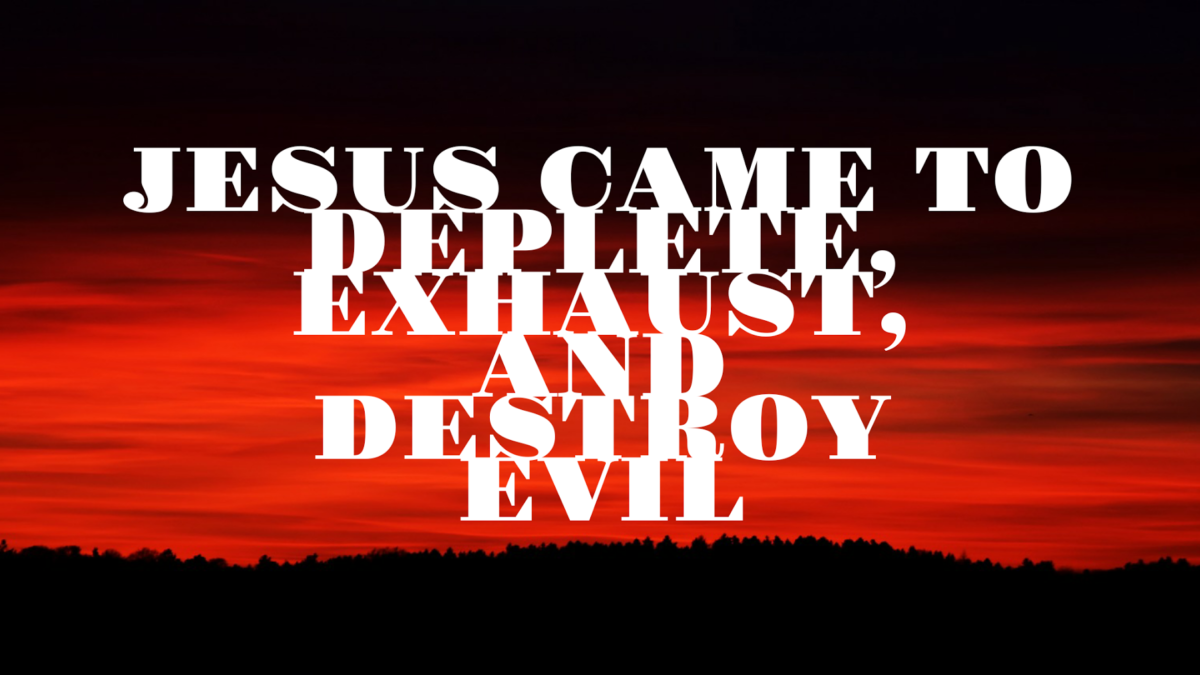This is an extended excerpt from the upcoming book Dying for a Fix: Crucifixion, Resurrection, and New Creation Eschatology. You can learn more about the book here.
Jesus came to defeat evil.
The theology of Christus Victor, or “the victory of the Savior,” is rooted in the understanding of lordship and sovereignty. In the beginning, God created the world and gave dominion over it to man. When Adam and Eve sinned in the garden, however, they abdicated their authority and Satan snatched it up, becoming the ruler of this world.
Sound fishy?
Don’t be too quick to dismiss it.
Satan is portrayed in the Second Testament as being the god of this world, the ruler of the power of the air, and the ruler of this world (see 2 Corinthians 4.4; Ephesians 2.2; John 12.31, 14.30, 16.11). He is said to possess all the kingdoms of the world, and to explicitly have control of the entire world (Luke 4.6; 1 John 5.19). He is ultimately the one behind murder, lying, persecution, and even physical sickness and disease (John 8.44; 1 John 3.12; Luke 13.16; Acts 10.38; Ephesians 6.12-13). Moreover, he and his fallen army are portrayed as having supernatural capabilities to obstruct Kingdom work, manipulate crowds, choke out faith, demonize people, and even keep little children in spiritual bondage (2 Thessalonians 2.9, 18; 1 Corinthians 2.8; Matthew 13.19; Mark 7.25, 9.17-22).
In short, Satan is the archenemy of God, active and alive in the world and working to harm humanity.
Which is why Jesus didn’t come to teach us how to live differently or to be spiritual or even to get us into Heaven. He came to deplete, exhaust, and destroy evil. He came to defeat Satan, to break his power and drive him and all his influence out of Creation so New Creation could begin.
Jesus referred to his coming death and resurrection as the completion of his ministry. Satan and his legions would rise up against him (1 Corinthians 2.8), and demonic darkness would, in fact, momentarily reign (Luke 22.53; John 9.4). But through the very act of being crucified by those hostile cosmic powers, Jesus would ultimately overthrow them.
Through Christ’s death and resurrection, the “ruler of this world will be driven out” (John 12.31). What’s more, having robbed Satan of his chief weapon, condemnation (see Colossians 2.14-15), and chief punishment, death (see Hebrews 2.14), Jesus made Satan and all his cohorts into a public spectacle (see Colossians 2.15), while Christ himself is seated and exalted and enthroned at the right hand of God (Acts 2.32-36; Philippians 2.9-11). When death itself is conquered, the one who is a “murderer from the beginning” (John 8.44) and holds “the power of death” (Hebrews 2.14) will be utterly defeated, humiliated, and destroyed.
Furthermore, through Christ’s victory we have victory in Jesus ourselves. We share in his defeat of evil, which is why he gives us the keys to his Kingdom and tells us whatever we bind and loose on earth shall be bound and loosed in Heaven (Matthew 16.19). In the Second Testament, the only ways these terms are used is to refer to the supernatural binding and loosing of demons and satanic powers. Christ intends to continue his demolition of evil in and through and with us, his people.
All of this is summed up by Paul’s letter to the Colossians 2.13-15 (NLT):
“You were dead because of your sins and because your sinful nature was not yet cut away. Then God made you alive with Christ, for he forgave all our sins. He canceled the record of the charges against us and took it away by nailing it to the cross. In this way, he disarmed the spiritual rulers and authorities. He shamed them publicly by his victory over them on the cross.”
Jesus has exhausted the powers of evil, making a show of them on the cross. He has defeated death itself. In order for us to fully benefit from what he has done, we must begin to more fully understand it.
fossores
Related posts
Categories
Category Cloud
Tag Cloud
Recent Posts
- Victors and Victims November 6, 2018
- 3 Hacks for Happiness October 29, 2018
- Hope Against Death September 20, 2018
- The Shape Of The Cross September 19, 2018


